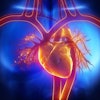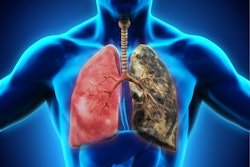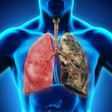A group led by researchers at the University of California, San Francisco (UCSF) suggests that cancers associated with radiation from CT scans could eventually account for 5% of all new cases annually, according to an article published April 14 in JAMA Internal Medicine.
The estimation is from a risk model based on approximately 93 million scans in 62 million patients in 2023, the authors noted.
“CT examinations in 2023 were projected to result in approximately 103,000 future cancers over the course of the lifetime of exposed patients,” wrote lead author Rebecca Smith-Bindman, MD, and colleagues.
Ionizing radiation from CT is a known carcinogen, although risks from CT exams vary by radiation dose, scan type, the body region imaged, and the sex, age, and size of patients, the authors explained. Thus, they sought to understand the public health impact of current CT use and to identify the highest risk examination types, age, and sex groups.
The researchers based their risk model on a multicenter sample of CT exams from UCSF’s International CT Dose Registry. From these scans, they determined organ-specific radiation doses by patient age, sex, and CT category, and then scaled to the U.S. population based on the number of exams in 2023. Market data from AuntMinnie.com sister company IMV Medical Information Division was also used in the analysis.
Lifetime risk estimates for developing CT-induced cancers were based on the National Academy of Science’s Biological Effects of Ionizing Radiation VII report. This report includes risk estimates based on data from atomic bomb survivors in Hiroshima and Nagasaki, the researchers noted.
According to the analysis, approximately 103,000 radiation-induced cancers were projected to result from 93 million scans. Risks were higher in children and adolescents, yet higher CT use in adults accounted for most (93,000) radiation-induced cancers, the researchers reported.
The most common cancers overall were lung cancer (22,400 cases), colon cancer (8,700 cases), leukemia (7,900 cases), and bladder cancer (7,100 cases), while in female patients, breast was second most common (5,700 cases). In addition, the group found the largest number of cancers was projected to result from abdomen and pelvis CT in adults, an estimated 37,500 (37%), followed by 21,500 (21%) from chest CT.
“If the number of new cancer diagnoses in the U.S. remains stable (1.95 million in 2023) and both the utilization and radiation doses from CT remain unchanged in future decades, CT could be responsible for approximately 5% of cancers diagnosed each year,” the group wrote.
Ultimately, the group noted that the number of CT exams performed in the U.S. rose from 68.7 million in 2007 to 93 million in 2023 and that this 35% increase can’t completely be explained by population growth.
“Justification of use and optimization of dose, including consideration of the need for multiphase examinations, are the tenets of CT imaging and must be applied uncompromisingly to mitigate potential harm,” the group concluded.
In an accompanying editorial, Ilana Richman, MD, of Yale School of Medicine in New Haven, and Mitchell Katz, MD, of NYC Health + Hospitals in New York City, noted that although there is some uncertainty around the study’s estimates, the findings suggest that CT scans are likely an important cause of cancer in the U.S. However, CT is inextricably woven into the fabric of modern medicine, they wrote.
To balance the benefits of CT with its risks, they suggested reducing CT use among low-risk patients, offering imaging alternatives such as ultrasound and MRI, and reducing variation in radiation technique across imaging centers.
“Lastly, educating clinicians about avoiding low-value testing and, in circumstances where alternatives are readily available, involving patients in the decision to do a CT scan may help shift culture and practice,” Richman and Katz concluded.
The full study is available here.




















